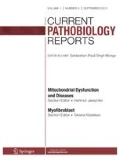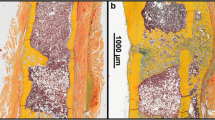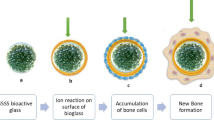Abstract
Purpose of Review
Orthopedic trauma is a major cause of morbidity and mortality worldwide. Although many fractures tend to heal if treated appropriately either by non-operative or operative methods, delayed or failed healing, as well as infections, can lead to devastating complications. Tissue engineering is an exciting, emerging field with much scientific and clinical relevance in potentially overcoming the current limitations in the treatment of orthopedic injuries.
Recent Findings
While direct translation of bone tissue engineering technologies to clinical use remains challenging, considerable research has been done in studying how cells, scaffolds, and signals may be used to enhance acute fracture healing and to address the problematic scenarios of nonunion and critical-sized bone defects. Taken together, the research findings suggest that tissue engineering may be considered to stimulate angiogenesis and osteogenesis, to modulate the immune response to fractures, to improve the biocompatibility of implants, to prevent or combat infection, and to fill large gaps created by traumatic bone loss. The abundance of preclinical data supports the high potential of bone tissue engineering for clinical application, although a number of barriers to translation must first be overcome.
Summary
This review focuses on the current and potential applications of bone tissue engineering approaches in orthopedic trauma with specific attention paid to acute fracture healing, nonunion, and critical-sized bone defects.



Similar content being viewed by others
References
Papers of particular interest, published recently, have been highlighted as: • Of importance •• Of major importance
Amin S, Achenbach SJ, Atkinson EJ, Khosla S, Melton LJ III. Trends in fracture incidence: a population-based study over 20 years. J Bone Miner Res. 2014;29:581–9.
Agarwal-Harding KJ, Meara JG, Greenberg SLM, et al. Estimating the global incidence of femoral fracture from road traffic conditions. J Bone Joint Surg Am. 2015;31:1–9.
Belmont PJ, Garcia EJ, Romano D, et al. Risk factors for complications and in-hospital mortality following hip fractures: a study using the National Trauma Data Bank. Arch Orthop Trauma Surg. 2014;134:597–604.
Patel KV, Brennan KL, Davis ML, Jupiter DC, Brennan ML. High-energy femur fractures increase morbidity but not mortality in elderly patients. Clin Orthop Relat Res. 2014;472:1030–5.
Odén A, McCloskey EV, Kanis JA, et al. Burden of high fracture probability worldwide: secular increases 2010–2040. Osteoporos Int. 2015;26:2243–8.
Marsell R, Einhorn TA. The biology of fracture healing. Injury. 2011;42:551–5.
Hak DJ, Fitzpatrick D, Bishop JA, Marsh JL, Tilp S, Schnettler R, et al. Delayed union and nonunions: epidemiology, clinical issues, and financial aspects. Injury. 2014;45:S3–7.
Keating JF, Simpson AH, Robinson CM. The management of fractures with bone loss. J Bone Joint Surg Br. 2005;87:142–50.
Quarto R, Giannoni P. Bone tissue engineering: past-present-future. Methods Mol Bio. 2016;1416:21–33.
Marcucio RS, Nauth A, Giannoudis PV, et al. Stem cell therapies in orthopaedic trauma. J Orthop Trauma. 2015;29:24–7.
Tatara AM, Mikos AG. Tissue engineering in orthopaedics. J Bone Joint Surg Am. 2016;98:1132–9.
Schroeder JE, Mosheiff R. Tissue engineering approaches for bone repair: concepts and evidence. Injury. 2011;42:609–13.
Evans CH. Barriers to the clinical translation of orthopedic tissue engineering. Tissue Eng Part B Rev. 2011;17:437–41.
Davies BM, Rikabi S, French A, et al. Quantitative assessment of barriers to the clinical development and adoption of cellular therapies: a pilot study. J Tissue Eng. 2014;5:2041731414551764.
Bara JJ, Herrmann M, Evans CH, Miclau T, Ratcliffe A, Richards RG. Improving translation success of cell-based therapies in orthopaedics. J Orthop Res. 2016;34:17–21.
Bauer S, Schmuki P, von der Mark K, et al. Engineering biocompatible implant surfaces. Part I: materials and surfaces. Prog Mater Sci. 2012;58:261–326.
Agarwal R, García AJ. Biomaterial strategies for engineering implants for enhanced osseointegration and bone repair. Adv Drug Deliv Rev. 2015;94:53–62.
Olivares-Navarrette R, Raines AL, Hyzy SL, et al. Osteoblast maturation and new bone formation in response to titanium implant surface features are reduced with age. J Bone Miner Res. 2012;27:1773–83.
Groessner-Schreiber B, Tuan RS. Enhanced extracellular matrix production and mineralization by osteoblasts cultured on titanium surfaces in vitro. J Cell Sci. 1992;101(Pt 1):209–17.
Shah A, Sinka R, Hickok N, et al. High-resolution morphometric analysis of human osteoblastic cell adhesion on clinically relevant orthopedic alloys. Bone. 1999;24:499–506.
Sinha R, Tuan R. Regulation of human osteoblast integrin expression by orthopedic implant materials. Bone. 1996;18:451–7.
Sinha R, Morris F, Shah S, et al. Surface composition of orthopaedic implant metals regulates cell attachment, spreading, and cytoskeletal organization of primary human osteoblasts in vitro. Clin Orthop Relat Res. 1994;305:258–72.
Giannoudis PV, Einhorn TA, Marsh D. Fracture healing: the diamond concept. Injury. 2007;38:3–6.
Giannoudis PV, Einhorn TA, Schmidmaier G, et al. The diamond concept—open questions. Injury. 2008;39:5–8.
• Lu M, Liao J, Dong J, Wu J, Qiu H, Zhou X, et al. An effective treatment of experimental osteomyelitis using the antimicrobial titanium/silver-containing nHP66 (nano-hydroxyapatite/polyamide-66) nanoscaffold biomaterials. Sci Rep. 2016;6:39174. This study shows that in a rabbit model, a scaffold containing silver ions and oxidized titanium has antibacterial effect and is effective in combating osteomyelitis.
Almubarak S, Nethercott H, Freeberg M, Beaudon C, Jha A, Jackson W, et al. Tissue engineering strategies for promoting vascularized bone regeneration. Bone. 2016;83:197–209.
Kiernan CH, Wolvius EB, Brama PAJ, et al. The immune response to allogeneic differentiated mesenchymal stem cells in the context of bone tissue engineering. Tissue Eng Part B Rev. 2018;24:75–83.
Copuroglu C, Calori GM, Giannoudis PV. Fracture non-union: who is at risk? Injury. 2013;44:1379–82.
Cui Q, Dighe AS, Irvine JI Jr. Combined angiogenic and osteogenic factor delivery for bone regenerative engineering. Curr Pharm Des. 2013;19:3374–83.
Bayer EA, Gottardi R, Fedorchak MV, Little SR. The scope and sequence of growth factor delivery for vascularized bone tissue regeneration. J Control Release. 2015;219:129–40.
Kawaguchi H, Oka H, Jingushi S, et al. A local application of recombinant human fibroblast growth factor 2 for tibial shaft fractures: a randomized, placebo-controlled trial. J Bone Miner Res. 2010;25:2459–67.
Grayson WL, Bunnell BA, Martin E, Frazier T, Hung BP, Gimble JM. Stromal cells and stem cells in clinical bone regeneration. Nat Rev Endocrinol. 2015;11:140–50.
Molina ER, Smith BT, Shah SR, Shin H, Mikos AG. Immunomodulatory properties of stem cells and bioactive molecules for tissue engineering. J Control Release. 2015;219:107–18.
Murphy MB, Moncivais K, Caplan AI. Mesenchymal stem cells: environmentally responsive therapeutics for regenerative medicine. Exp Mol Med. 2013;45:e54.
Dupont KM, Sharma K, Stevens HY, Boerckel JD, Garcia AJ, Guldberg RE. Human stem cell delivery for treatment of large segmental bone defects. Proc Natl Acad Sci. 2010;107:3305–10.
Vo TTN, Kasper FK, Mikos AGA. Strategies for controlled delivery of growth factors and cells for bone regeneration. Adv Drug Deliv Rev. 2012;64:1292–309.
Urist MR. Bone: formation by autoinduction. Science. 1965;150:893–9.
Hankenson KD, Gagne K, Shaughnessy M. Extracellular signaling molecules to promote fracture healing and bone regeneration. Adv Drug Deliv Rev. 2015;94:3–12.
Govender S, Csimma C, Genant HK, et al. Recombinant human bone morphogenetic protein-2 for treatment of open tibial fractures: a prospective, controlled, randomized study of four hundred and fifty patients. J Bone Joint Surg Am. 2002;84–A:2123–34.
Aro HT, Govender S, Patel AD, Hernigou P, Perera de Gregorio A, Popescu GI, et al. Recombinant human bone morphogenetic protein-2: a randomized trial in open tibial fractures treated with reamed nail fixation. J Bone Joint Surg. 2011;93:801–8.
Lyon T, Scheele W, Bhandari M, Koval KJ, Sanchez EG, Christensen J, et al. Efficacy and safety of recombinant human bone matrix for closed tibial diaphyseal fracture. J Bone Joint Surg Am. 2013;95:2088–97.
Galimberti F, Lubelski D, Healy AT, Wang T, Abdullah KG, Nowacki AS, et al. A systematic review of lumbar fusion rates with and without the use of rhBMP-2. Spine (Phila Pa 1976). 2015;40:1132–9.
Einhorn TA, Gerstenfeld LC. Fracture healing: mechanisms and interventions. Nat Rev Rheumatol. 2014;11:45–54.
Claes L, Recknagel S, Ignatius A. Fracture healing under healthy and inflammatory conditions. Nat Rev Rheumatol. 2012;8:133–43.
Kolar P, Schmidt-Bleek K, Schell H, Gaber T, Toben D, Schmidmaier G, et al. The early fracture hematoma and its potential role in fracture healing. Tissue Eng Part B Rev. 2010;16:427–34.
Loi F, Córdova LA, Pajarinen J, Lin TH, Yao Z, Goodman SB. Inflammation, fracture and bone repair. Bone. 2016;86:119–30.
Wu S, Liu X, Yeung KWK, Liu C, Yang X. Biomimetic porous scaffolds for bone tissue engineering. Mater Sci Eng R Rep. 2014;80:1–36.
Rupp F, Scheideier L, Olshanska N, et al. Enhancing surface free energy and hydrophilicity through chemical modification of microstructured titanium implant surfaces. J Biomed Mater Res - Part A. 2006;76:323–34.
Keselowsky BG, Collard DM, García AJ. Integrin binding specificity regulates biomaterial surface chemistry effects on cell differentiation. Proc Natl Acad Sci U S A. 2005;102:5953–7.
Wermelin K, Aspenberg P, Linderbäck P, et al. Bisphosphonate coating on titanium screws increases mechanical fixation in rat tibia after two weeks. J Biomed Mater Res - Part A. 2008;86:220–7.
Ramazanoglu M, Lutz R, Rusche P, Trabzon L, Kose GT, Prechtl C, et al. Bone response to biomimetic implants delivering BMP-2 and VEGF: an immunohistochemical study. J Cranio-Maxillofacial Surg. 2013;41:826–35.
Böstman OM, Laitinen OM, Tynninen O, et al. Tissue restoration after resorption of polyglycolide and poly-laevo-lactic acid screws. J Bone Joint Surg Br. 2005;87:1575–80.
Zhang J, Ebraheim N, Lause GE, et al. A comparison of absorbable screws and metallic plates in treating calcaneal fractures: a prospective randomized trial. J Trauma Acute Care Surg. 2012;72:E106–10.
Sun H, Luo CF, Zhong B, et al. A prospective, randomised trial comparing the use of absorbable and metallic screws in the fixation of distal tibiofibular syndesmosis injuries: mid-term follow-up. Bone Joint J. 2014;96(B):548–54.
Böstman OM, Pihlajamäki HK. Adverse tissue reactions to bioabsorbable fixation devices. Clin Orthop Relat Res. 2000;371:216–27.
Ramot Y, Haim-Zada M, Domb AJ, Nyska A. Biocompatibility and safety of PLA and its copolymers. Adv Drug Deliv Rev. 2016;107:153–62.
Tuan R. Role of adult stem/progenitor cells in osseointegration and implant loosening. Int J Oral Maxillofac Implant. 2011;26(Suppl):50–62.
Trampuz A, Widmer AF. Infections associated with orthopedic implants. Curr Opin Infect Dis. 2006;19:349–56.
Hake ME, Young H, Hak DJ, Stahel PF, Hammerberg EM, Mauffrey C. Local antibiotic therapy strategies in orthopaedic trauma: practical tips and tricks and review of the literature. Injury. 2015;46:1447–56.
Campoccia D, Montanaro L, Arciola CR. A review of the biomaterials technologies for infection-resistant surfaces. Biomaterials. 2013;34:8533–54.
Raphel J, Holodniy M, Goodman SB, Heilshorn SC. Multifunctional coatings to simultaneously promote osseointegration and prevent infection of orthopaedic implants. Biomaterials. 2016;84:301–14.
Johnson CT, García AJ. Scaffold-based anti-infection strategies in bone repair. Ann Biomed Eng. 2015;43:515–28.
Qureshi AT, Terrell L, Monroe WT, Dasa V, Janes ME, Gimble JM, et al. Antimicrobial biocompatible bioscaffolds for orthopaedic implants. J Tissue Eng Regen Med. 2014;8:386–95.
Hou T, Xu J, Li Q, Feng J, Zen L. In vitro evaluation of a fibrin gel antibiotic delivery system containing mesenchymal stem cells and vancomycin alginate beads for treating bone infections and facilitating bone formation. Tissue Eng Part A. 2008;14:1173–82.
Chamberlain G, Fox J, Ashton B, Middleton J. Concise review: mesenchymal stem cells: their phenotype, differentiation capacity, immunological features, and potential for homing. Stem Cells. 2007;25:2739–49.
Tzioupis C, Giannoudis PV. Prevalence of long-bone non-unions. Injury. 2007;38(Suppl 2):S3–9.
Mills LA, Aitken SA, Simpson AH. The risk of non-union per fracture: current myths and revised figures from a population of over 4 million adults. Acta Orthop. 2017;88:434–9.
Zura R, Mehta S, Della Rocca GJ, et al. Biological risk factors for nonunion of bone fracture. JBJS Rev. 2016;4:1–12.
Santolini E, West R, Giannoudis PV. Risk factors for long bone fracture non-union: a stratification approach based on the level of the existing scientific evidence. Injury. 2015;46:S8–19.
Panteli M, Pountos I, Jones E, Giannoudis PV. Biological and molecular profile of fracture non-union tissue: current insights. J Cell Mol Med. 2015;19:685–713.
Hak DJ. Management of aseptic tibial nonunion. J Am Acad Orthop Surg. 2011;19:563–73.
Kadhim M, Holmes L Jr, Gesheff MG, Conway JD. Treatment options for nonunion with segmental bone defects: systematic review and quantitative evidence synthesis. J Orthop Trauma. 2017;31:111–9.
Babhulkar S, Pande K, Babhulkar S. Nonunion of the diaphysis of long bones. Clin Orthop Relat Res 2005;NA;50–6.
Metsemakers WJ, Kuehl R, Moriarty TF, et al. Infection after fracture fixation: current surgical and microbiological concepts. Injury. 2016;1383(16):30470.
Kanakaris NK, Lasanianos N, Calori GM, et al. Application of bone morphogenetic proteins to femoral non-unions: a 4-year multicentre experience. Injury. 2009;40:54–61.
Kanakaris NK, Calori GM, Verdonk R, Burssens P, Biase PD, Capanna R, et al. Application of BMP-7 to tibial non-unions: a 3-year multicenter experience. Injury. 2008;39:S83–90.
Giannoudis PV, Kanakaris NK, Dimitriou R, Gill I, Kolimarala V, Montgomery RJ. The synergistic effect of autograft and BMP-7 in the treatment of atrophic nonunions. Clin Orthop Relat Res. 2009;467:3239–48.
Papanna MC, Al-Hadithy N, Somanchi BV, et al. The use of bone morphogenic protein-7 (OP-1) in the management of resistant non-unions in the upper and lower limb. Injury. 2012;43:1135–40.
Friedlaender GE, Perry CR, Cole JD, et al. Osteogenic protein-1 (bone morphogenetic protein-7) in the treatment of tibial nonunions: a prospective, randomized clinical trial comparing RHOP-1 with fresh bone autograft. J Bone Joint Surg Am. 2001;83:S151–8.
Dallari D, Rani N, Sabbioni G, Mazzotta A, Cenacchi A, Savarino L. Radiological assessment of the PRF/BMSC efficacy in the treatment of aseptic nonunions: a retrospective study on 90 subjects. Injury. 2016;47:2544–50.
Giannoudis PV, Gudipati S, Harwood P, Kanakaris NK. Long bone non-unions treated with the diamond concept: a case series of 64 patients. Injury. 2015;46:S48–54.
Calori GM, Colombo M, Mazza E, et al. Monotherapy vs. polytherapy in the treatment of forearm non-unions and bond defects. Injury. 2013;44(Suppl 1):S63–9.
Gómez-Barrena E, Rosset P, Lozano D, Stanovici J, Ermthaller C, Gerbhard F. Bone fracture healing: cell therapy in delayed unions and nonunions. Bone. 2015;70:93–101.
Mauffrey C, Barlow BT, Smith W. Management of segmental bone defects. J Am Acad Orthop Surg. 2015;23:143–53.
Aronson J. Current concepts review—limb-lengthening, skeletal reconstruction, and bone transport with the Ilizarov method*. J Bone Joint Surg Am. 1997;79:1243–58.
Masquelet AC, Begue T. The concept of induced membrane for reconstruction of long bone defects. Orthop Clin North Am. 2010;41:27–37.
Chimutengwende-Gordon M, Mbogo A, Khan W, Wilkes R. Limb reconstruction after traumatic bone loss. Injury. 2017;48:206–13.
Papakostidis C, Bhandari M, Giannoudis PV. Distraction osteogenesis in the treatment of long bone defects of the lower limbs: effectiveness, complications and clinical results; a systematic review and meta-analysis. Bone Joint J. 2013;95–B:1673–80.
Balasundaram G, Webster TJ. An overview of nano-polymers for orthopedic applications. Macromol Biosci. 2007;7:635–42.
O’Brien FJ. Biomaterials and scaffolds for tissue engineering. Mater Today. 2011;14:88–95.
•• Baker RM, Tseng LF, Iannolo MT, Oest ME, Henderson JH. Self-deploying shape memory polymer scaffolds for grafting and stabilizing complex bone defects: a mouse femoral segmental defect study. Biomaterials. 2016;76:388–98. This study shows that shape memory polymer grafts are effective in integrating into mouse femoral defects and are able to provide torsional stability at the location of the defect.
Decambron A, Fournet A, Bensidhoum, M, et al. Low-dose BMP-2 and MSC dual delivery onto coral scaffold for critical-size bone defect regeneration in sheep. J Orthop Res. 2017;35:2637–45.
• Bosemark P, Perdikouri C, Pelkonen M, Isaksson H, Tägil M. The masquelet induced membrane technique with BMP and a synthetic scaffold can heal a rat femoral critical size defect. J Orthop Res. 2015;33:488–95. This article shows that treatment with three agents combined (BMP-7, a tricalcium phosphate hydroxyapatite scaffold, and systemic bisphosphanate) was more effective in filling a critical-sized rat femoral defect than with one or two of the agents.
Arealis G, Nikolaou VS. Bone printing: new frontiers in the treatment of bone defects. Injury. 2015;46:S20–2.
Funding
This work was supported in part by the CASIS (Grant no. GA-2016-236), the U.S. Department of Defense (DOD W81XWH-14-2-0003, DOD W81XWH-14-1-0217, DOD W81XWH-15-2-0011), the National Institutes of Health (1UG3 TR002136), and the Ri.MED Foundation, Palermo, Italy.
Author information
Authors and Affiliations
Corresponding author
Ethics declarations
Conflict of Interest
The authors (Peter N. Mittwede, Riccardo Gottardi, Peter G. Alexander, Ivan S. Tarkin, and Rocky S. Tuan) declare that they have no conflicts of interest.
Human and Animal Rights and Informed Consent
This review article does not contain any human or animal studies performed by any of the authors.
Additional information
This article is part of the Topical Collection on Organ Development and Regeneration
Rights and permissions
About this article
Cite this article
Mittwede, P.N., Gottardi, R., Alexander, P.G. et al. Clinical Applications of Bone Tissue Engineering in Orthopedic Trauma. Curr Pathobiol Rep 6, 99–108 (2018). https://doi.org/10.1007/s40139-018-0166-x
Published:
Issue Date:
DOI: https://doi.org/10.1007/s40139-018-0166-x




